説明
海松象嵌巨眼・多髯で凄みがあり、凛々しい鍾馗を彫刻するのは難しかった。京都は江戸時代からの風習で屋根に鍾馗像を置いているので有名。現在でも古い町屋で鍾馗像を見ることができる。
紐穴は鬼の左脚内側。胴との間に僅かな空間を作り、紐通しを設定する自然紐穴。紐穴は必ずしも根付のどこかに穴を開けるばかりではなく、構図の決め方によりこうした自然の処理ができることだ。
自然紐通しは意匠を損ねないばかりか、紐を通すために開けた穴よりも、遥かに丈夫といえる。ただそれを発明した作者の苦労も、並大抵のことではないだろう。
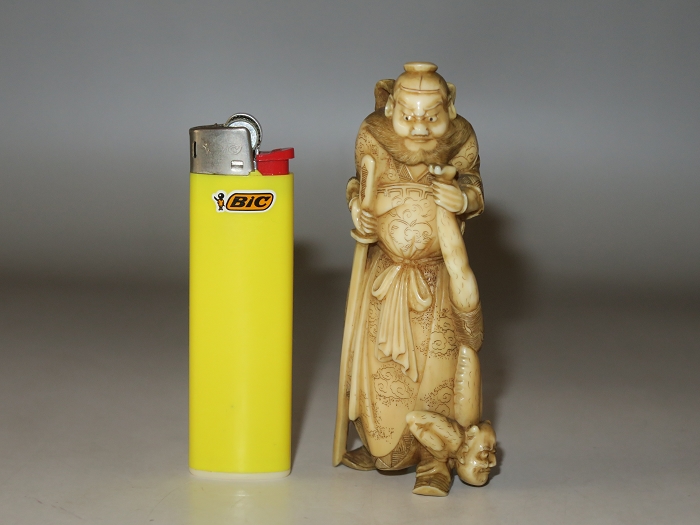
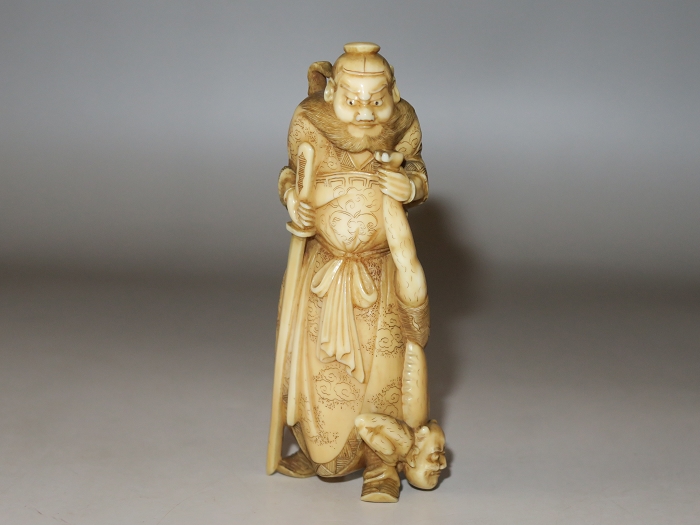
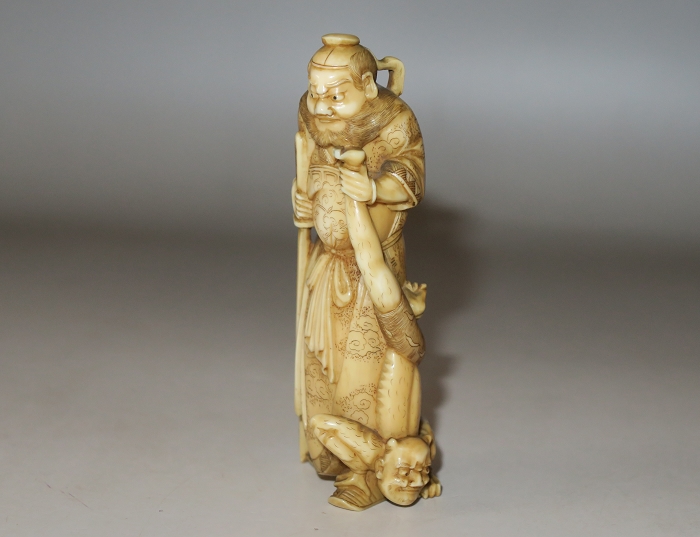

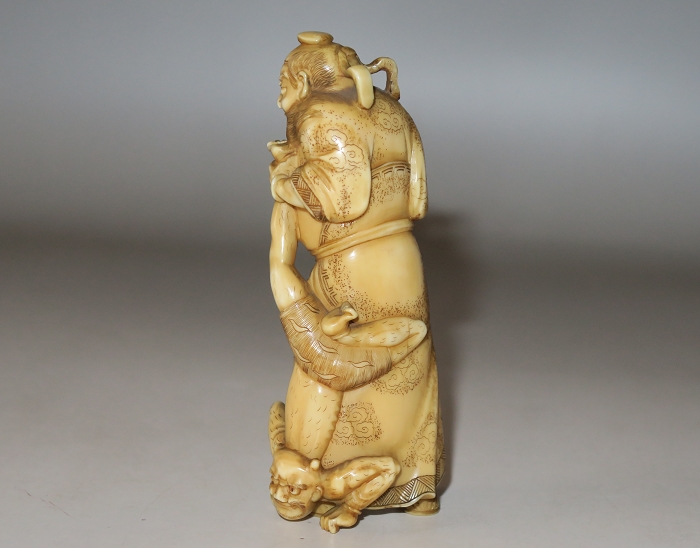
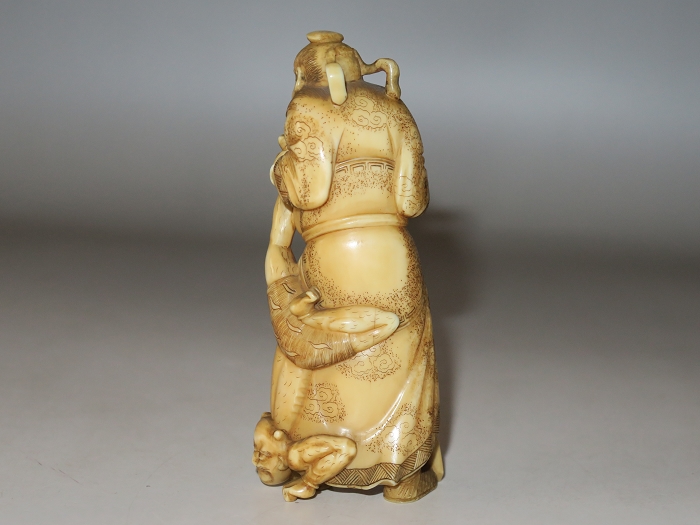

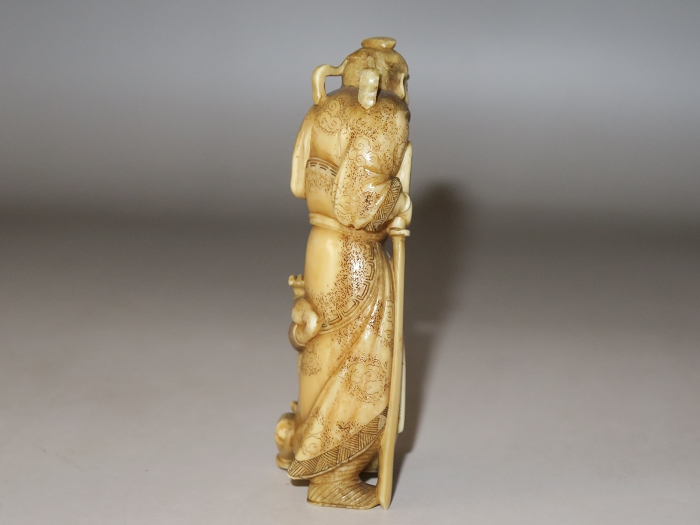
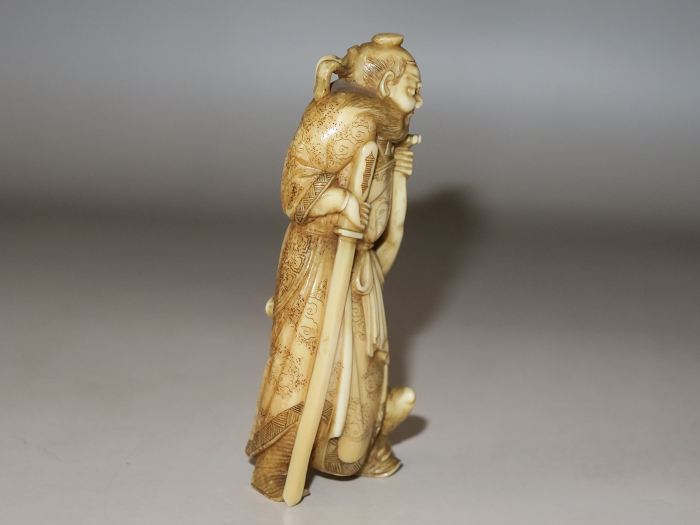
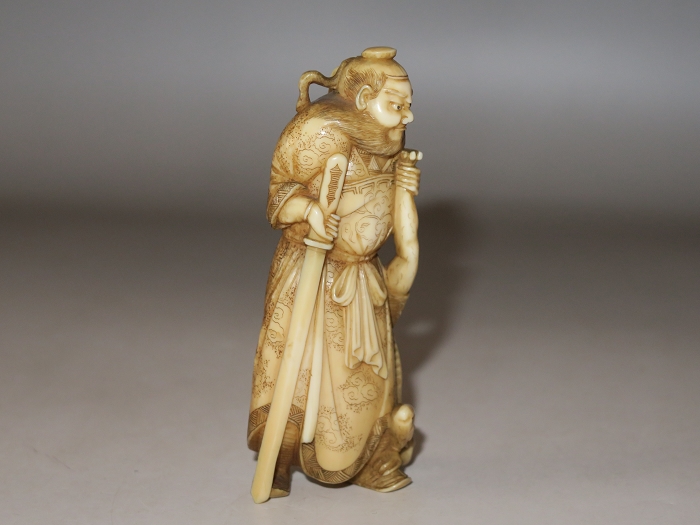
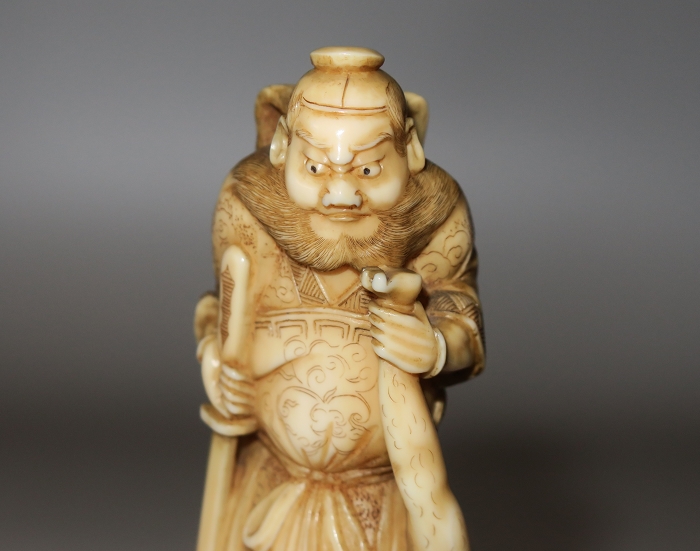


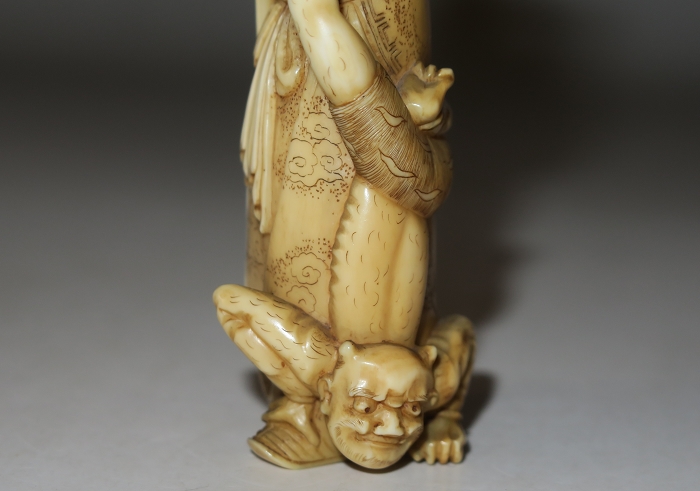

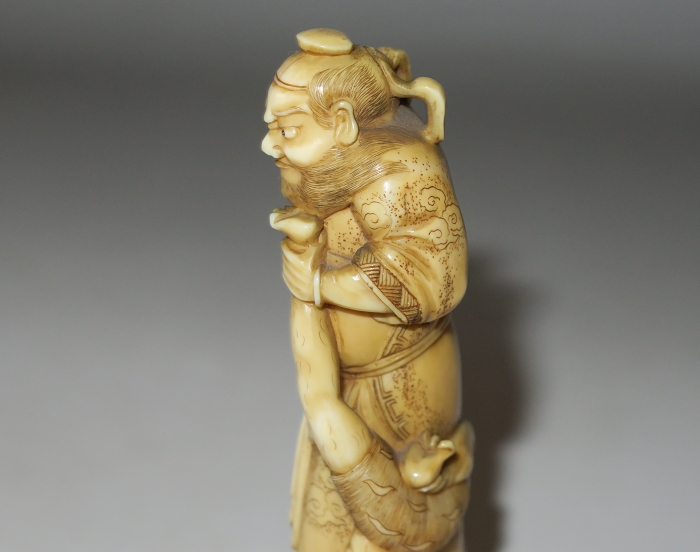
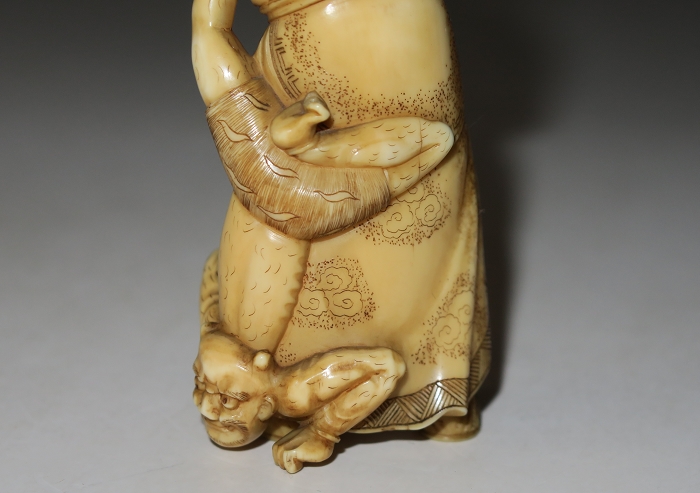
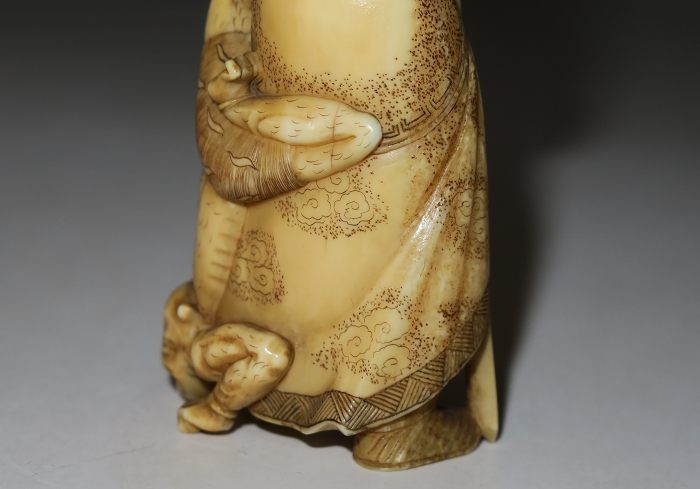


参考:
日本の根付第五図版(第45図),佐々木忠次郎著,光融館書店昭和11(1936)年刊
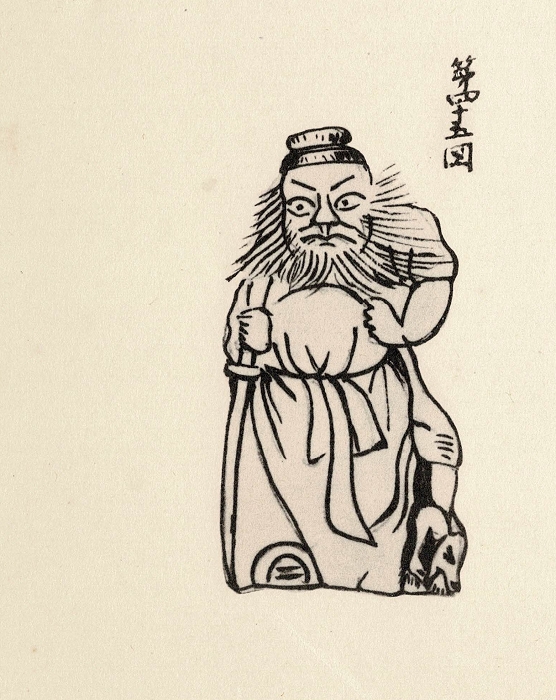
細密工芸の華—根付と提げ物118頁(図版402),たばこと塩の博物館編,2016年4月発行

緑青N0.27-根付特集84頁(図版52),藤井邦彦編,マリア書房1998年7月発行
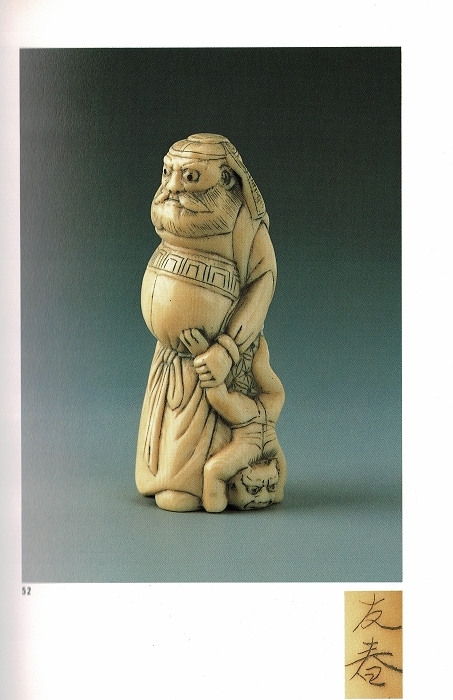
A MARINE IVORY OKIMONO STYLE NETSUKE OF SHOKI AND AN ONI (DEMON)
marine ivory
Edo period (1615-1858), late 19th century
unsigned
Edo(Tokyo) school
high 9.1cm
Heavy 66.5g
Very fine condition.
Provenance: European collection.
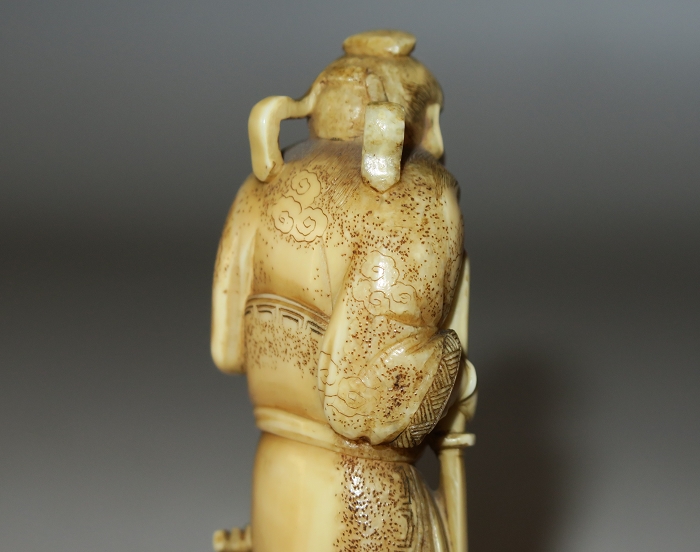
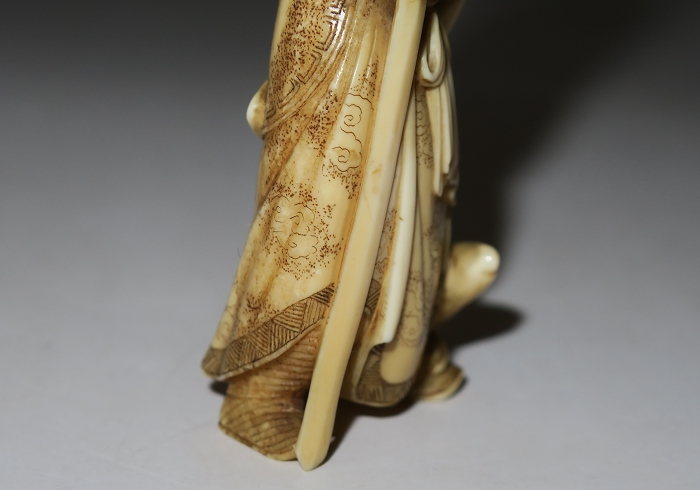
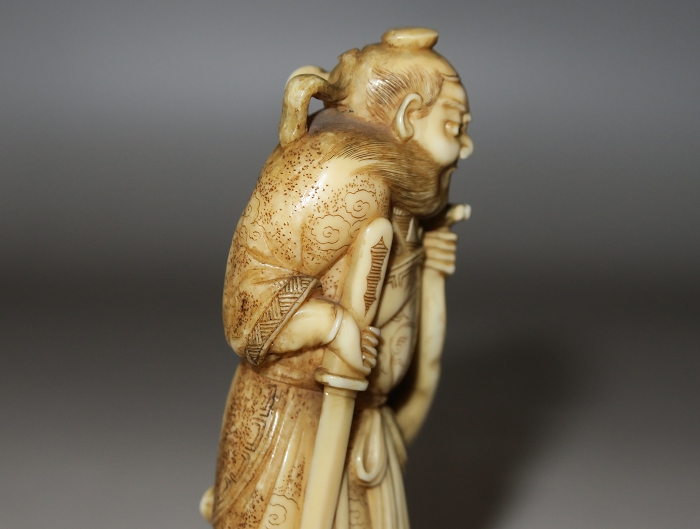
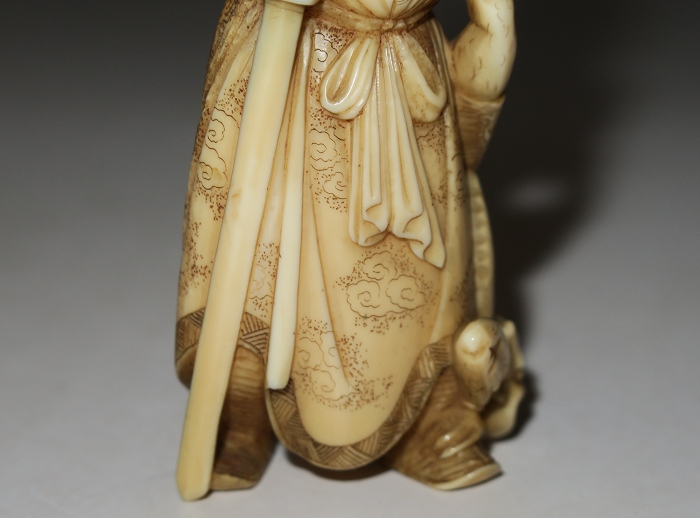
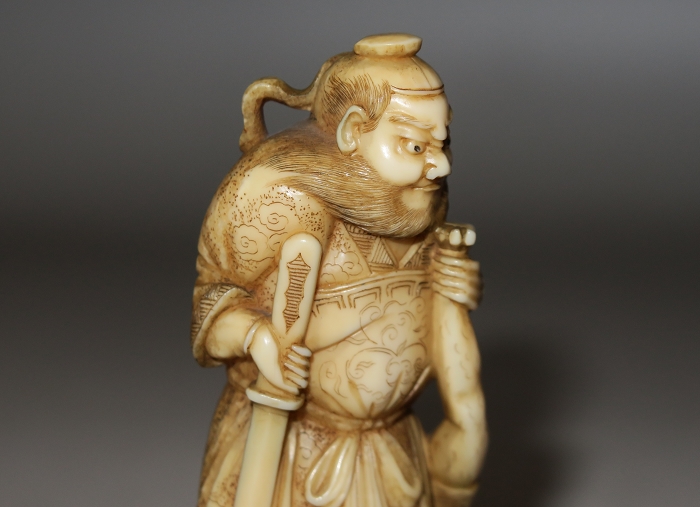

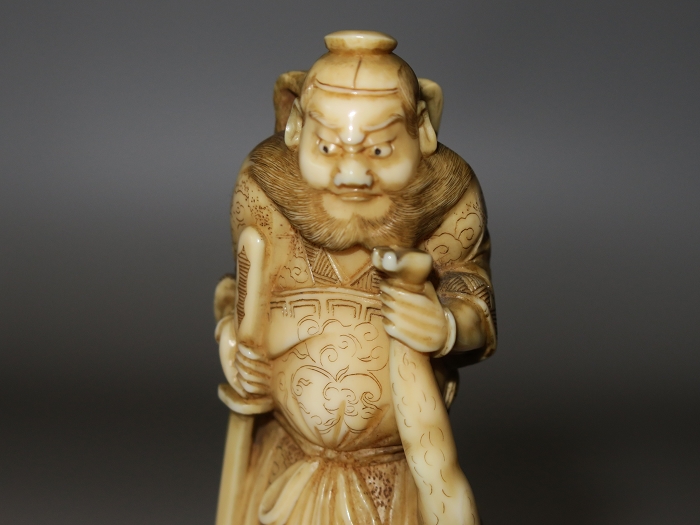

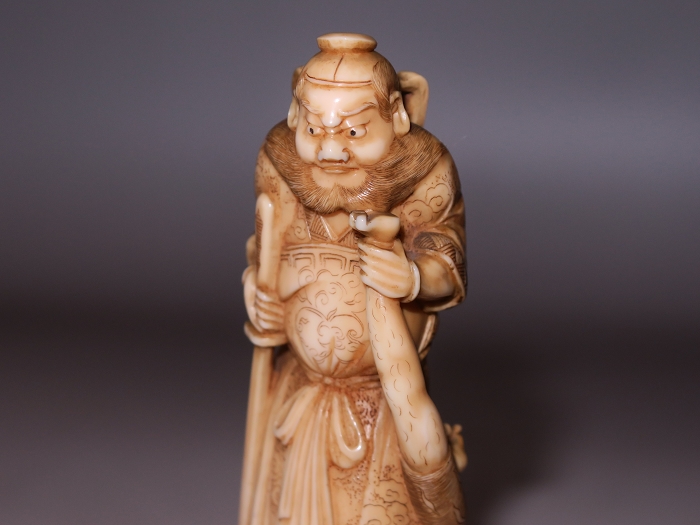
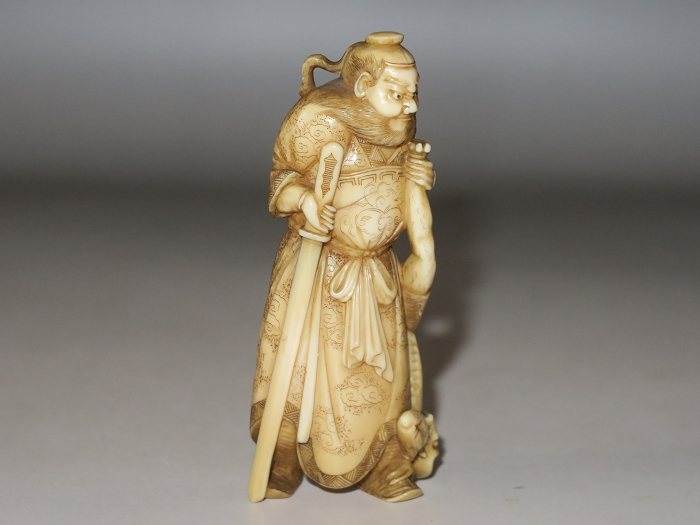
Shoki holding his sword, an oni (demon) lifted up by him. The demon-queller standing, ferociously pulling the of a large captured oni who falls back at his feet, his robe engraved with scattered scrolling foliage.
A dynamically crafted netsuke.The demon queller Shoki is shown on top of an oni, with his sword drawn, pressing him down and pushing his weight onto him. The oni is clenching his clawed limbs, though his attempts to struggle appear futile. The individual expressions are finely carved, the pupils minutely inlaid in dark horn. Shoki’s robe is adorned with various patterns and his finely incised beard is wild and flaming, flowing to his sides from the sheer force of his advance on the helpless demon. The marine ivory is finely stained and accentuated. Natural himotoshi and minutely incised in the back inside a wavy reserve.
The early examples of katabori netsuke were made from about 1630 to 1700. At this time Japanese carvers were strongly influenced by Chinese designs. Large numbers of important illustrated Chinese books reached Japan. The best known was the Sancai tuhui (Tripartite picture assembly), published in 1610. The illustrations of mythical people and fabulous beasts, such as the ChungKuel(shoki), were of particular interest.
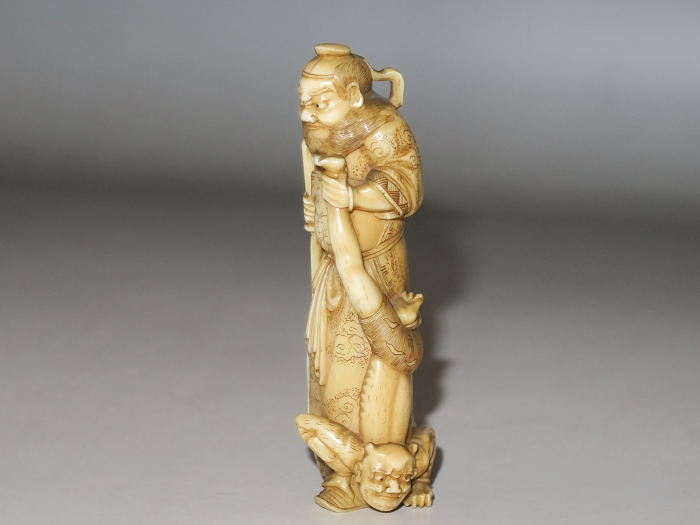


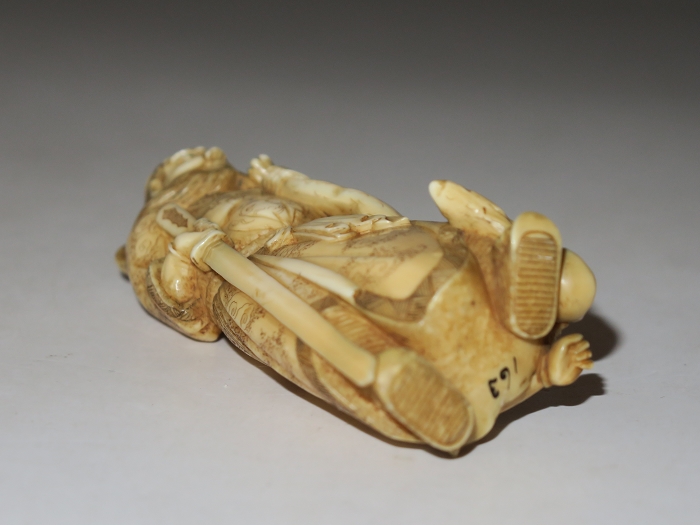
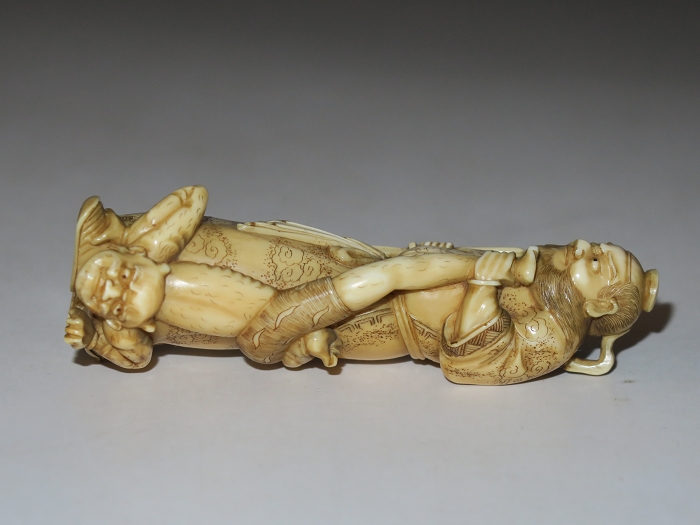
Reference:Netsuke Subjects P46(Cat No.74),By Karl M. Schwarz,Böhlau Verlag(Vienna),1992
Walrus tusk: Walrus have two large tusks (elongated canine teeth) projecting downward from the upper jaw. These tusks, often reaching two feet in length, have been extensively carved as ivory for centuries in many countries and especially in Japan. Walrus tusk carvings are usually easy to identify, because much of the interior of the tooth is filled with a mottled, almost translucent substance that is harder and more resistant to carving than the rest of the tooth.
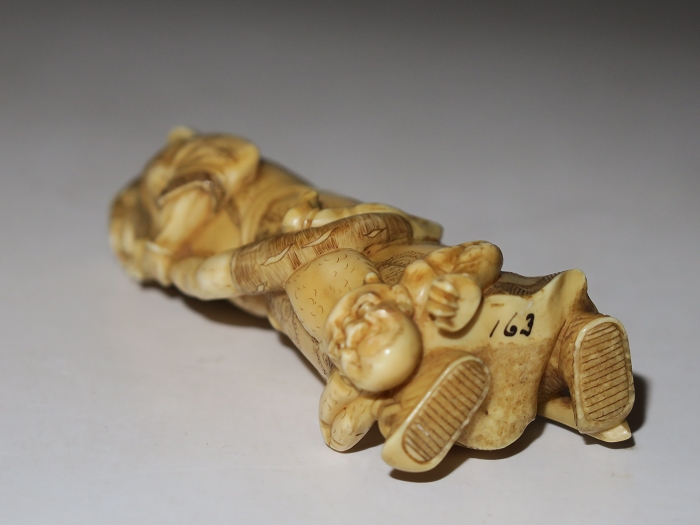
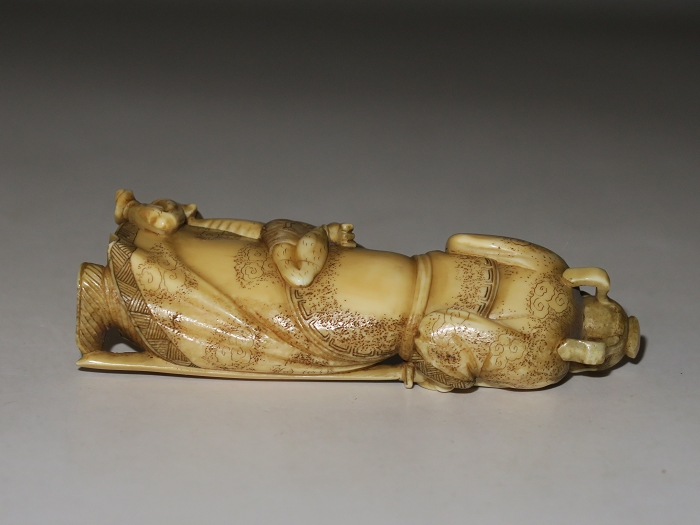
MEIGETSU CO., LTD is specializing in china and Japanese Ancient arts. We guarantee all artifacts to be genuine as described. It is our policy never to deliberately list fakes as genuine. All art listed will always stated as such.
If you are looking for Netsuke or syunga, we offers a top quality selection at fair prices. More importantly I am expert in EAST ASIATIC COLLECTION OF CHINESE AND JAPANESE field and will unselfishly help & guide you with the upmost integrity.
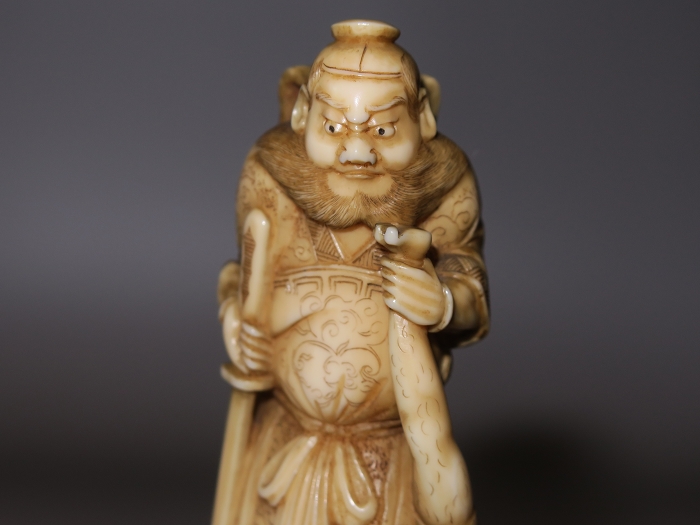
Please make sure with your country’s customs before making an order or a bid that the Japanese Antiques can be imported into your country without a problem. We do not take any responsibility, including (not limited to) refund, due to the above reasons.
There is no responsibility for us regarding “customs duty”, “consumption tax”, etc. according to the law of the country of the shipping destination, so we may pay separately for the “tax” of the area of residence for the item price.
Import duties, taxes, and charges are not included in the item price or shipping cost.
These charges are the buyers responsibility. Please check with your countrys customs office to determine what these additional costs will be prior to buying.




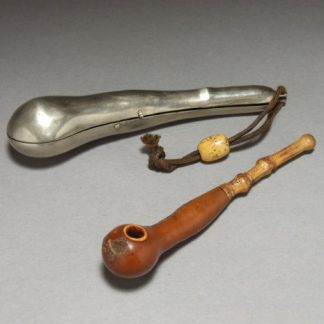

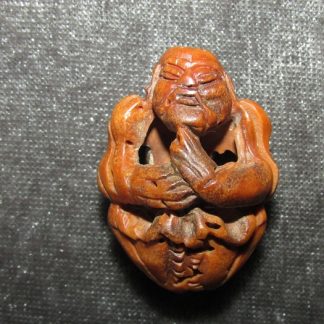
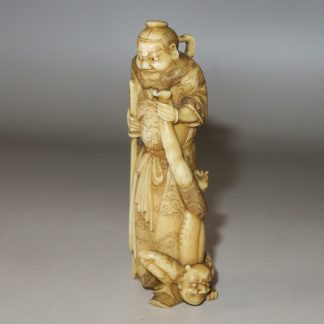
レビュー
レビューはまだありません。